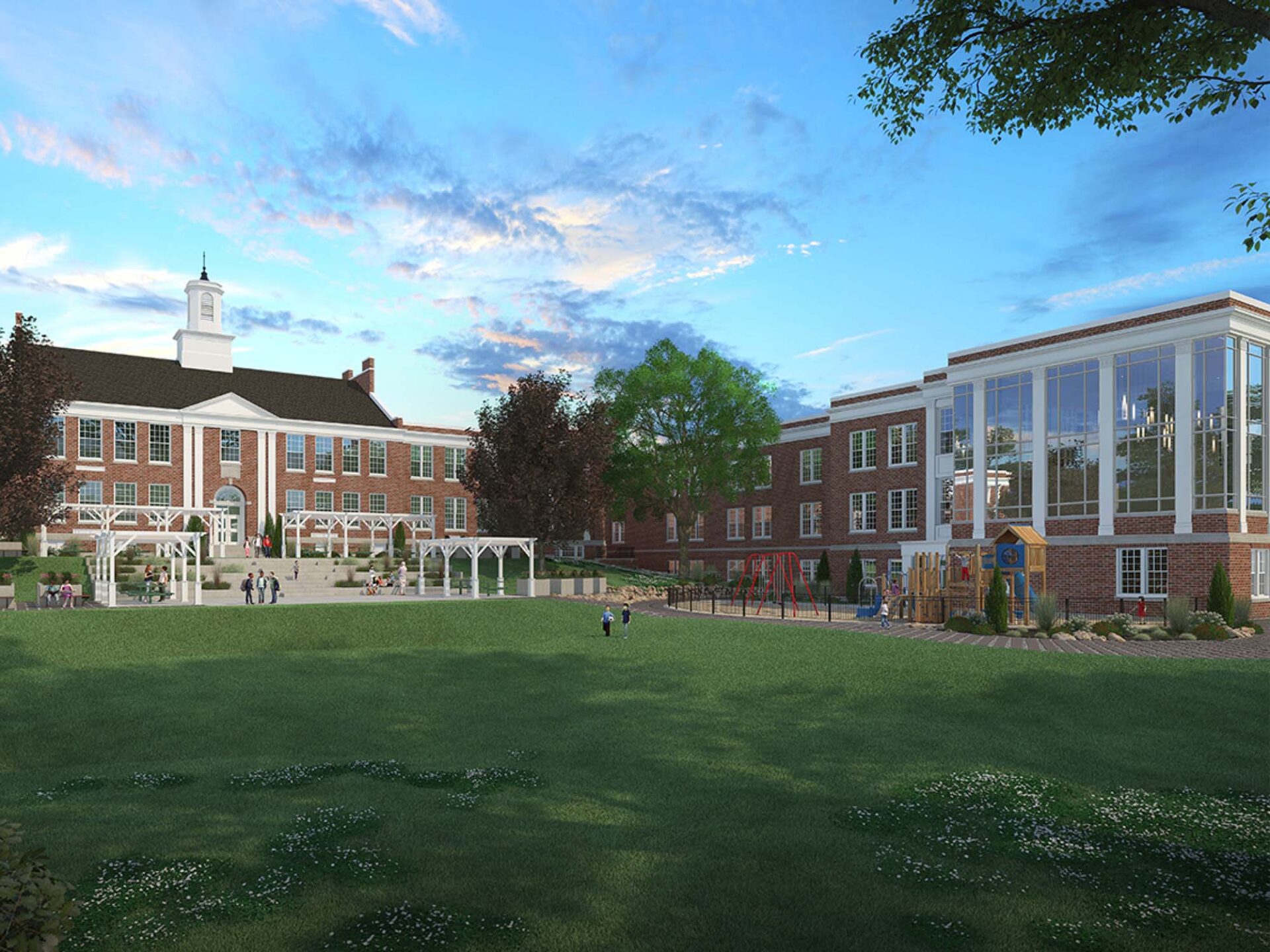

By Joseph Pooler and Vivian Varbedian
To accommodate a growing population, repair outdated components, and support modern educational experiences, the City of Watertown, MA, is undergoing a $170 million project to upgrade its elementary school facilities. Currently, the City is rebuilding two schools, Hosmer and Cunniff. A third project, set to begin construction in 2022, will renovate Watertown’s third elementary school, Lowell. These projects involve several challenges, both planned and unplanned, from a novel contracting plan, to the new normal of building during COVID-19, to protecting the educational experience while construction was underway.
To help realize their new facilities, the City selected a team proven on similar school projects who knew the market, the City, and the specific constraints of each project. This team, comprised of project manager Hill International, Inc. (Hill), architect Ai3, and contractor Brait Builders, among many other consultants and subcontractors, has kept Watertown’s multi-school project progressing safely, on-budget, and within schedule.
Creative Packaging
“This is interesting work for a lot of reasons,” says Hill Senior Project Manager Vivian Varbedian. “Not the least of those is the fact that the rebuilds at Hosmer and Cunniff are actually packaged as one project.” While developing the master plan, the City opted to split the work into two projects, Hosmer and Cunniff together, with Lowell standing alone. This allowed Watertown flexibility to build its team. Ultimately, the City chose Ai3 and Hill to support all three schools, but selected Brait Builders Corporation as the general contractor for only Hosmer and Cunniff. The team is currently selecting a contractor for the Lowell renovation. Electing to package the work this way streamlines the construction process and provides consistent quality.
COVID-19 Complications
COVID-19 impacted all aspects of the project, but specifically created difficulties coordinating work with residents close to the work sites. Watertown’s elementary schools are in densely populated neighborhoods, and COVID-19 forced many in the surrounding area to work and study from home, necessitating an increased emphasis on keeping everyone informed and noise and dust control.
“The coronavirus created a stressful situation for everyone, but we’ve done our best to keep people notified,” says Vivian. “We are constantly holding School Building Committee meetings and public forums via Zoom, sending out mail and emails, going door to door, and working closely with community leaders to keep people updated on construction plans. This has gone a long way in helping to protect relationships with the neighbors.”
On the other hand, COVID-19 also created an opportunity. After verifying the site and the team had adequate COVID-19 protocols in-place, Watertown approved the commencement of construction in the summer of 2020. As many other projects in the state were shutdowns or delayed, Watertown’s project team had no issue procuring materials and a workforce.
Making the Swing Space
More challenging than COVID-19 was the planning required to provide continuous education through construction. “The City anticipates substantial completion of all three schools by the 2023-2024 school year,” says Vivian. “So they knew the work would overlap with several school years. To provide for swing spaces for the students involved some creative strategy and sequencing.
“In the first place, the work at Hosmer, which is the biggest of the schools, was divided into two construction phases. During the first phase, the project team demolished a large building on Hosmer’s campus and reconstructing it. Meanwhile, most students, teachers, and administrators are still able to use a smaller facility on site. Preschool students and teachers were transferred to a separate building off campus. Since the demolished facility held a lot of multi-purpose space, such as a gym and a cafeteria, the smaller facility is still large enough to meet the educational needs of non-preschool students with some adjustments for mealtimes and extracurricular activities.
“Eventually, the students will move into the new building when it is complete and then the City will begin demolishing the smaller Hosmer building to create a play area and open spaces. This two-phased approach provides the best value for the City and will allow its educational services to continue uninterrupted at Hosmer.
“At Cunniff, the City did something very interesting: they leased a property from the Archdiocese of Boston. This property sits outside the City’s jurisdiction. This move required a lot of planning and extra work, such as adding bussing and modifications to make the property suitable for a public school. But, this solution provided a cost savings to the project and allowed the City to reduce the project duration by more than a year. And, once the Cunniff project is complete, the students at Lowell will be bussed to the archdiocesan property for school and construction can begin on the Lowell property.”
These creative strategies allowed Watertown to streamline their project and protect the educational experience of their students, certainly, but they also required a strong move management approach. “Elementary school teachers have a lot of materials,” says Vivian. “And all of these materials needed to be moved to their temporary homes prior to beginning demolition.” The project management team’s services were critical in helping to strategize and execute the move with the City.
“The entire process was a domino effect,” admits Vivian. “We would have a great idea about location, but then as soon as we got there, hundreds of necessary renovations became apparent. While the team was finishing the renovations, we had to identify movers who had experience with educational moves. Once we identified movers, we had to schedule the work at up to four locations at once and in coordination with other work at Hosmer and Cunniff. All of this was on top of our ongoing obligations to help ensure that design continued per schedule and that bids for the rest of the project were in process.”
Ultimately, Watertown was able to move their schools into temporary locations in time for the 2020-2021 school year. Again, COVID-19 offered an unexpected opportunity. The City decided to offer 100% virtual education for the first few months of the year. This gave the team some extra time to make certain the work in the swing spaces was accomplished as specified.
Sustainability
Soon enough, the Hosmer, Cunniff, and Lowell students will return to their new and improved school facilities full time. Work at Cunniff is nearly complete while Hosmer recently enjoyed its topping off ceremony. Among their many attractive new features, all the new schools will be greener than before. For example, Hosmer and Cunniff will be the first net-zero energy and LEED Gold elementary schools in the state. The schools accomplish this with extensive solar-power features. In addition to a solar canopy on site, 100% of the roof area of both buildings is covered in photovoltaic panels, setting off the electricity needs of the schools entirely.
The Future
“Overcoming the challenges in planning and related to COVID-19 have been very fulfilling experiences and I look forward to the next steps as construction continues on Hosmer and Cunniff and construction planning ramps up for Lowell,” says Vivian. “These schools, when they are completed, will stand at the forefront of elementary education and sustainability in the state. Through their deft strategies and sequencing, the projects will serve as an effective model for other municipalities. We’re extremely proud to be working with Watertown on these incredible projects.”
Share

June 23, 2025 | Articles
Jeffrey Hurley Joins Hill’s Northern California Rail Practice

June 23, 2025 | Articles
Ready, Set, Grow: First VP Chad Koelling Takes Charge of Hill’s Mountain West Region

June 8, 2025 | Articles
PMO in Saudi Arabia: The Holistic Approach to Realizing a National Mega-Portfolio

June 1, 2025 | Articles

May 26, 2025 | Articles

May 12, 2025 | Articles
Keeping Your Water/Wastewater Programs Flowing with Public Relations

April 27, 2025 | Articles
Oiling the Machine: Steps to Successful Permitting on Infrastructure Megaprojects

April 20, 2025 | Articles
Sustainable Scaling: Solutions for Managing Risk on Europe’s Data Center Projects